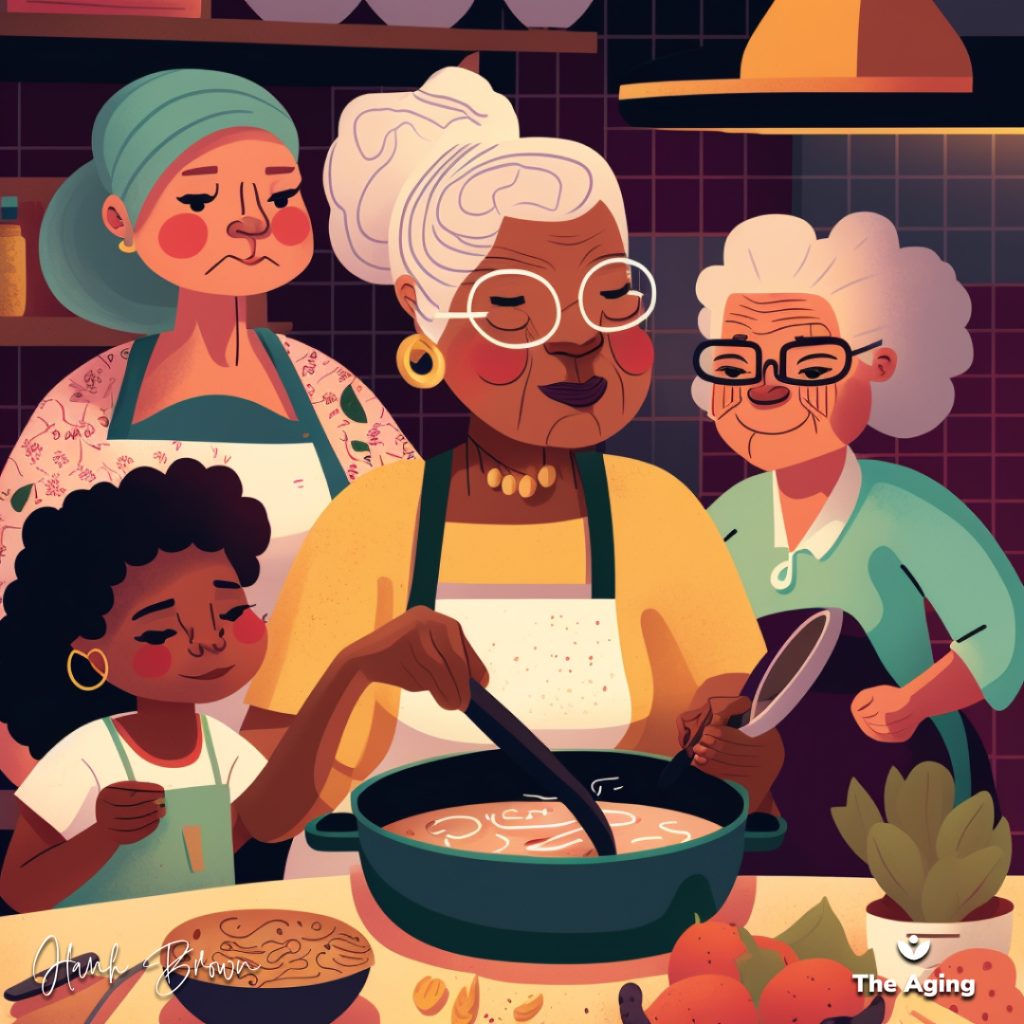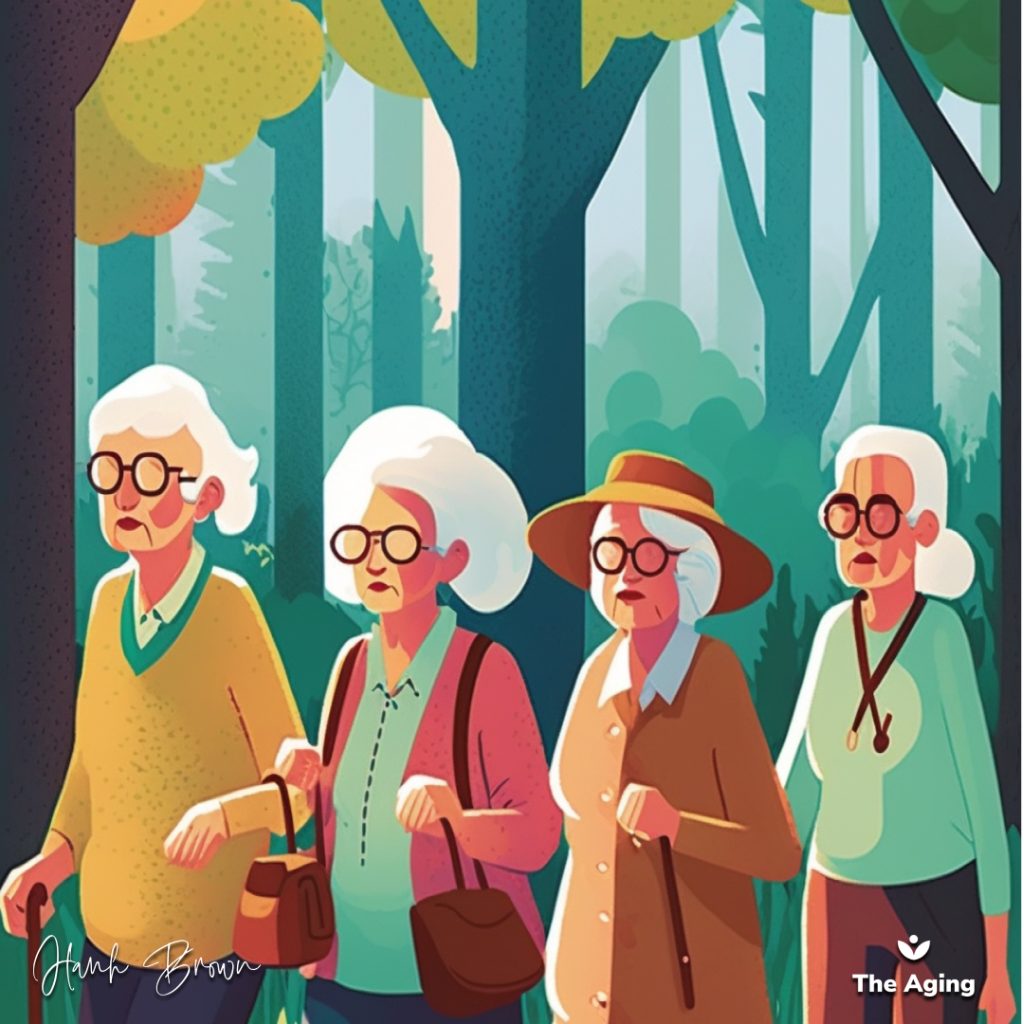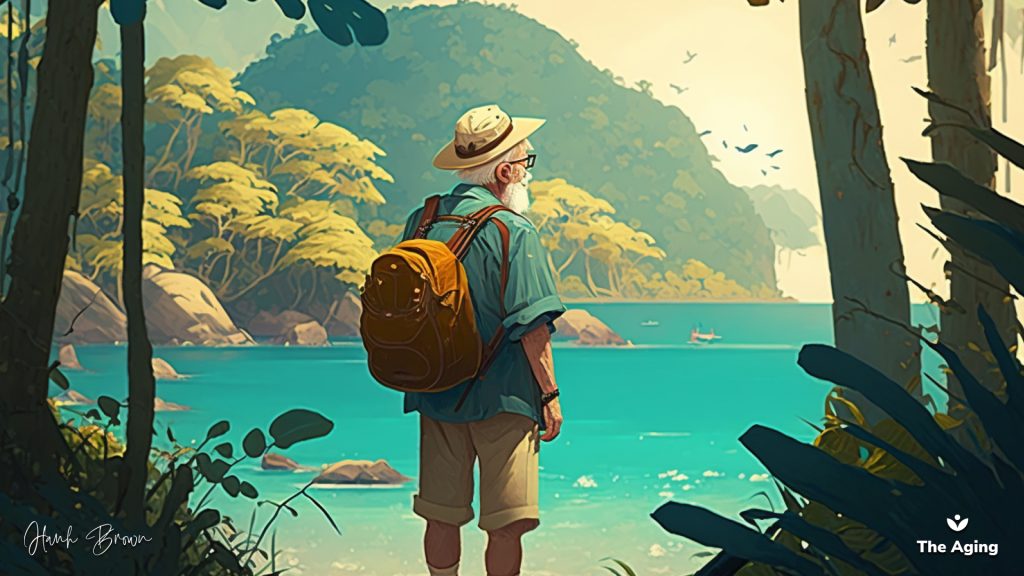AI and Healthy Eating: Nutrition Innovation

Health and well-being are complex yet interconnected aspects that greatly depend on our dietary choices. Healthy eating is a cornerstone of wellness, influencing everything from our energy levels to our resilience against diseases. Modern problems often require modern solutions, and artificial intelligence (AI) has shown promising potential in promoting healthy eating. AI can analyze a vast amount of nutritional data, learn from it, and make predictions or suggestions. Imagine an AI-driven recommendation system that could tailor a personalized diet plan based on your age, activity level, health status, and even genetic makeup. It sounds like a dream come true, doesn’t it? However, like any other technology, AI is a double-edged sword. An over-dependence on AI might risk reducing complex nutritional science to an oversimplified algorithm. Our health is a nuanced, highly individualized aspect. Can we fully trust an algorithm with it? This article seeks to explore this intriguing intersection of AI and healthy eating, shedding light on the potential benefits and risks of our growing reliance on digital health technologies. Understanding the Role of AI in Nutrition The advent of artificial intelligence (AI) has revolutionized many areas of our lives, including our approach to nutrition. AI’s role in nutrition primarily revolves around providing personalized nutrition advice and promoting healthy eating habits. AI-powered applications can gather data about an individual’s age, lifestyle, physical health, and dietary preferences, among other things. Sophisticated algorithms then analyze this data to provide tailored nutrition recommendations. AI-driven Nutrition Recommendations The onset of AI has revolutionized countless industries, and nutrition is no exception. At the heart of this change are AI-driven nutrition recommendations, a blend of technological prowess and dietary science that has the potential to redefine our relationship with food. AI in nutrition works by amassing large amounts of data—ranging from demographic information, health indicators, dietary preferences, to lifestyle habits. Sophisticated algorithms then sift through this information, learning patterns, and producing nutrition recommendations tailored to individual needs. For example, a diabetic patient might receive suggestions for low-glycemic foods, while a marathon runner might get recommendations for carb-rich meals. Moreover, AI algorithms can evolve with new data. This means they have the potential to adapt to changes in your lifestyle, health status, or dietary habits, keeping the recommendations up-to-date and relevant. However, it’s crucial to note that these systems are only as good as the data they are trained on. Biased or incomplete data could result in flawed recommendations. Hence, while promising, the accuracy of AI-driven nutrition advice is dependent on the quality and comprehensiveness of the data fed into the system. Personalized Diets Powered by AI Digging deeper into the role of AI in nutrition, let’s turn our attention to personalized diets. The one-size-fits-all approach to nutrition has been repeatedly criticized for its inability to address individual needs and preferences. AI, with its ability to handle complex and varied data, offers an exciting solution to this problem. AI-powered applications can generate personalized meal plans based on multiple factors such as an individual’s age, gender, weight, activity level, health conditions, and even genetic information. Some cutting-edge apps even consider factors like sleep patterns, stress levels, and food preferences. The result? A truly personalized diet plan that aligns with the user’s lifestyle and health objectives. For instance, an AI-powered app might suggest a protein-rich diet for a gym-goer aiming to build muscle, or low-sodium meals for someone managing high blood pressure. These personalized diets aim to cater to specific health and lifestyle needs, making it easier for individuals to make better food choices. Nevertheless, while AI can streamline the process of creating personalized diets, it’s important to remember that it doesn’t replace the need for professional health advice. AI can provide a great starting point, but the guidance of healthcare and nutrition professionals remains crucial for a well-rounded approach to health and wellness. The Advantages of AI in Healthy Eating Choices Artificial Intelligence (AI) brings significant advantages to the table when it comes to healthy eating. It provides accessible nutrition information and personalized guidance based on individual’s data. AI can adapt to changing health needs and preferences, making it a powerful tool for personalizing diets. It also encourages and sustains healthy eating habits by identifying patterns in food choices and providing real-time feedback and recommendations. Accessible Nutrition Information and Guidance In a world where diet fads come and go, finding reliable and individualized nutrition advice can be challenging. This is where AI steps in, democratizing access to nutrition information and guidance. AI-powered apps can provide nutrition advice at the tip of your fingers, anytime, anywhere. These applications can scan product barcodes, analyze food photos, or even listen to your voice descriptions of meals to provide real-time nutrition analysis. This instant feedback allows users to make informed food choices, even when on the go. Also read: AI and Digital Literacy: Empowering Senior Citizens Through Tech Moreover, these apps often include educational content about nutrition, further helping users understand their dietary choices. They can highlight the nutritional value of different foods, explain the importance of various nutrients, and debunk common diet myths, all of which contribute to a more informed user base. However, while AI can provide readily available nutrition advice, it’s important for users to critically evaluate this information. Always cross-reference AI advice with credible sources and consult a healthcare professional when in doubt. Personalization and Adaptation to Individual Needs One of the most significant advantages of AI in healthy eating is its ability to personalize advice and adapt to individual needs. Unlike traditional diet plans, AI can consider a broad spectrum of factors, including age, health conditions, activity levels, and even genetic predispositions, to generate personalized nutrition recommendations. This high degree of personalization helps ensure that the advice is not only relevant but also sustainable for the individual. For instance, an AI-driven app might suggest a vegetarian with a busy schedule quick and easy plant-based meals packed with protein. This level of personalization not only caters to dietary preferences but also considers lifestyle constraints. Moreover, AI’s ability
Alfonso Fasano – Parkinson’s Disease, Is It a Paradigm of Aging?

Parkinson’s disease (PD) is a neurodegenerative disorder that is rapidly overtaking Alzheimer’s disease as the most common. It’s a progressive disorder of the nervous system that affects movement and can lead to tremors, slowness of movement, stiffness in the limbs and trunk, balance problems, and difficulty walking. There is no cure for this disease but there are many ways to manage it. PD has many problems for our society, from caregiver stress to hospitalization costs, but our understanding of genetic and environmental causes is slowly upgrading them to the level of diseases – ‘a much-needed step towards precision medicine.’ Precision medicine offers the hope of tailored treatments for each individual, rather than a one-size-fits-all approach. We hope that by increasing our understanding of PD we can create better treatments and hopefully one day a cure. Join me in conversation with Dr. Alfonso Fasano, Professor of Medicine, Neurology University of Toronto. ——————– Bio: Dr. Alfonso Fasano is a renowned and award-winning neurologist, scientist, and researcher. He has published over 180 papers in peer-reviewed international journals, including the prestigious New England Journal of Medicine. He joined Toronto Western Hospital’s Movement Disorder Centre where he co-directs the surgical program for movement disorders. Dr. Fasano’s main interest is patho_physiology, studying how problems with brain function can lead to changes in behavior or other symptoms – which he pursues through his research on Parkinson’s disease (PD). He is currently leading several clinical trials to better understand PD and improve treatments. Learn more about Dr. Fasano: Deep Brain Stimulation (DBS) Clinic: https://www.uhn.ca/Krembil/Clinics/Deep_Brain_Stimulation_Clinic LinkedIn: https://www.linkedin.com/in/alfonso-fasano-5437b42b/
Joel Fuhrman – Nutritional Tips for Brain Health, Longevity, and Healthy Aging

You know that you should be eating better, but it’s hard to know where to start. Nutrition is one of the most important factors in maintaining a healthy lifestyle, but it can also be one of the most confusing. The baby boomer generation is entering into a critical phase of life, where maintaining good health and cognitive function is essential for enjoying a long, active lifestyle. One of the most effective ways to slow down the aging process is to eat a healthy, balanced diet. A diet full of fresh fruits and vegetables, lean proteins, and unprocessed whole grains can provide our bodies with all the nutrients we need to function optimally. And by adhering to this type of eating plan, we can reduce our risk of developing diabetes, heart disease, and other conditions that are commonly associated with aging. One option for those looking to transition to a healthier way of eating is the Eat To Live Retreat. As the name suggests, this retreat is all about helping participants achieve their health goals by providing them with the education, guidance, and support they need. Led by renowned nutrition expert Dr. Joel Fuhrman, M.D., this intensive residential program teaches people how to eat for life – not just for quick fixes or temporary results. Whether you’re dealing with chronic disease or simply want to improve your overall quality of life through better nutrition, this retreat could be exactly what you need to achieve optimal wellness. So if you are a baby boomer ready to embrace new approaches toward health and longevity, consider signing up for a retreat. By utilizing this diet, baby boomers can protect their brains from neurodegenerative diseases like Alzheimer’s and support healthy aging at the cellular level. Overall, the nutritarian diet is an ideal choice for supporting brain health, longevity, and healthy aging during this crucial phase of life. ———- Bio: Dr. Joel Fuhrman, M.D. is a graduate of the Univ. Penn Medicine medical program. He currently serves as a Professor of Health Sciences at Northern Arizona University and is also President of the Nutritional Research Foundation. He has published in medical journals and contributes to ongoing nutritional studies. With hundreds of thousands of people worldwide overcoming obesity, food addiction, diabetes, and heart disease through virtual speaking engagements and Eat to Live Retreats, Dr. Fuhrman has become one of the most influential voices in health and nutrition today. Visit Dr. Fuhrman on LinkedIn: https://www.linkedin.com/in/joel-fuhrman-m-d-61887112/ Twitter: https://twitter.com/DrFuhrman His Website: https://www.drfuhrman.com/
Julie Viola – The Great Resignation, Unpaid Childcare, and Flexible Work Schedules

The Great Resignation has been a hot topic lately, with many people debating its pros and cons. While some see it as a way to improve their work-life balance, others worry about the impact it could have on their career. But what is the Great Resignation, and why is it so controversial? The Great Resignation is when someone voluntarily leaves their job, usually without another job lined up. They do this to focus on other areas of their life, such as their family or personal health. While this may seem like a good idea, in theory, there are some potential downsides. For example, leaving your job without another one lined up can be a risky move financially. And if you’re in a highly competitive field, taking time off could put you at a disadvantage when you try to reenter the workforce. The term “sandwich generation” is used to describe the group of people who are sandwiched between the demands of taking care of their aging parents while also caring for their own children. This can be a difficult juggling act, and employers need to be understanding and accommodating of this demographic. Employees in the sandwich generation may need more flexible working schedules in order to be able to meet the demands of caring for both parents and children. They may also need more time off or different types of benefits, such as elder care benefits. By understanding the needs of employees in the sandwich generation, employers can create a more supportive and productive work environment. My guest is Julie Viola, MHA. She is known as a catalyst of healthcare strategies and go-to-market execution in the health tech field. Her ability to connect ideas and people results in strategies that drive brand preference, successful solution launches, and campaigns of impact. She joins me today to discuss the sandwich generation and what companies need to know about this demographic as it relates to working schedules and benefits. Find Julie on: LinkedIn: https://www.linkedin.com/in/juliemviola/ Twitter: https://twitter.com/HealthCareEtc Cody Health Ventures: https://www.codyhealthventures.com/
Tracey Gendron – Why America Thinks Your Age Is a Big Deal

In America, age is a big deal. We are a youth-obsessed culture that is always looking for the next best thing. This can be seen in the way we talk about aging. We often use words like “elderly” or “senior citizen” to describe older adults, as if they are a different species. This othering creates a sense of distance between us and them, which can lead to negative attitudes and stereotypes. Ageism is a form of discrimination that is based on age. It can affect anyone, regardless of their actual age. One of the most common examples is the way we treat older adults. We often assume that they are not as capable as younger people, and this can lead to them being overlooked or ignored. Ageism can also affect caregiving, as older adults may be less likely to receive care if they are perceived as being a burden. Generational labels are another example of ageism. They are often used to divide people into groups based on their age, which can create feelings of competition or hostility between different generations. The term “successful aging” is also problematic, as it suggests that there is a right and wrong way to age. Elderhood is a better way to talk about older age than retirement, as it acknowledges the many contributions that older adults make to society. It also recognizes that aging is a natural process that should be celebrated, not feared. Today my guest is Dr. Tracey Gendron. Dr. Tracey Gendron is a highly respected gerontologist and author who is dedicated to understanding and raising awareness of ageism. She has written the book “Ageism Unmasked: Exploring Age Bias and How to End it.” Her research focuses on the language and expression of ageism, as well as on elderhood as a stage of development. Dr. Gendron’s personal and professional goal is to understand and disrupt the deeply embedded, normalized, and invisible ageism that exists within us all. Learn more about Tracey: LinkedIn: https://www.linkedin.com/in/tracey-gendron/ Website: https://www.traceygendron.com/ Purchase her book “Ageism Unmasked”: https://www.penguinrandomhouse.com/books/700435/ageism-unmasked-by-tracey-gendron/
Hanh Brown – How Baby Boomer Entrepreneurs Can Create a Digital Brand to Attract Their Ideal Customer

Baby Boomers have always been a generation of innovators and entrepreneurs. In fact, according to the Small Business Association, there are over 33.2 million small businesses in the United States. And if you’re a Baby Boomer, there’s a good chance you’re the owner of one of them. But as anyone who has ever run a small business knows, it’s not always easy to find and keep customers. In fact, according to a recent study, 71% of small businesses say that generating new leads is their top challenge. So how can you make sure your business is able to find and keep its ideal customers? The answer may lie in understanding how the world has changed since you started your business. After all, the way people research and buy products and services has changed dramatically in recent years, thanks to the internet and social media. And while this can be a challenge for small businesses, it’s also an opportunity. Today’s consumers are used to being able to find information about pretty much anything they want online. They’re also used to connecting with companies and brands on social media. And they’re used to being able to buy things with just a few clicks. If you can tap into these trends, you’ll be better positioned to succeed in the digital age. So how can you ensure your small business can find and keep its ideal customers? One way is by creating a digital brand. It’s how your business presents itself online and interacts with its customers. And in today’s digital world, it’s more important than ever to have a strong digital brand. In this webinar, we’ll cover topics like how to find your ideal customer online, what kind of content to create, and how to use social media to build relationships with your customers. If you can tap into these trends, you’ll be better positioned to succeed in the digital age. In This Value-Packed Exclusive Live Event, I Will Share: ✅ What Is A Digital Brand? ✅ What Is An Ideal Customer Profile (ICP), Or Buyers Avatar? ✅ Why Prospecting Is The Lifeblood Of Any Business And How To Prospect. ✅ What Is Funnel Marketing, And How Does It Work? ✅ How To Generate Leads Via Social Media (Inbound & Outbound). ✅ How Does Market Segmentation Work, and What Are Its Benefits? ✅ What Is SaaS Marketing, And How Does It Work? ✅ What Is Marketing Automation, And How Does It Work? Follow Hanh on these platforms: InOneApp – All-in-One Sales & Marketing Platform: https://inoneapp.co/ LinkedIn: https://www.linkedin.com/in/hanh-brown-boomerlivingtv/ Video Version of this Podcast Episode: https://bl.hanhdbrown.com/replay-hanh-brown-how-baby-boomers-can-create-a-digital-brand-to-capture-their-ideal-customer Youtube Channel – Aging Media Show: https://www.youtube.com/@agingmediashow5456 Podcast Site: https://podcast.boomerliving.tv/
Hanh Brown – 10 Things You Need to Know to Successfully Market to Seniors

As our population ages, it is important to consider the role of technology in the lives of older adults. We’ll explore a variety of topics related to technology and older adults, including how to better understand their needs, what factors influence their decision to adopt new technologies, and what challenges they face when doing so. We will also discuss ways to improve digital literacy among seniors and make technology more accessible and affordable for this population. Finally, we will explore how to ensure that seniors are safe when using technology and what policies can be put in place to encourage the adoption of new technologies by older adults. Here are the 10 topics: 1. How can we better understand the needs of older adults with technology? 2. What factors influence older adults’ decision to adopt technology? 3. What challenges do older adults face when adapting to new technologies? 4. How does literacy impact older adults’ ability to use technology effectively? 5. What strategies can be used to improve digital literacy among older adults? 6. How can we make technology more accessible for older adults? 7. How can we make technology more affordable for older adults? 8. How can we ensure that seniors are safe when using technology? 9. How can policymakers increase the adoption of technology by older adults? 10. How sales & marketing automation can benefit tech companies serving seniors, with affordability, accessibility, and safe for older adults. In these difficult economic times, it is more important than ever to be efficient with fewer resources. Many businesses are trying to improve and streamline their sales and marketing strategies so they can reach more senior consumers and have a bigger impact. They want to know how to automate their processes so they can accomplish more with fewer resources. Please reach out if you are having difficulty with this. I’d be happy to look into how I can help you optimize and streamline your sales and marketing processes. Automation allows you to do more with less time and staff, allowing you to focus on other aspects of your business. Let’s look at how we can help you achieve your sales objectives. Follow Hanh on these platforms: InOneApp – All-in-One Sales & Marketing Platform: https://inoneapp.co/ LinkedIn: https://www.linkedin.com/in/hanh-brown-boomerlivingtv/ Video Version of this Podcast Episode: https://bl.hanhdbrown.com/replay-hanh-brown-10-things-you-need-to-know-to-successfully-market-to-seniors-1588 Youtube Channel – Aging Media Show: https://www.youtube.com/@agingmediashow5456 Podcast Site: https://podcast.boomerliving.tv/
